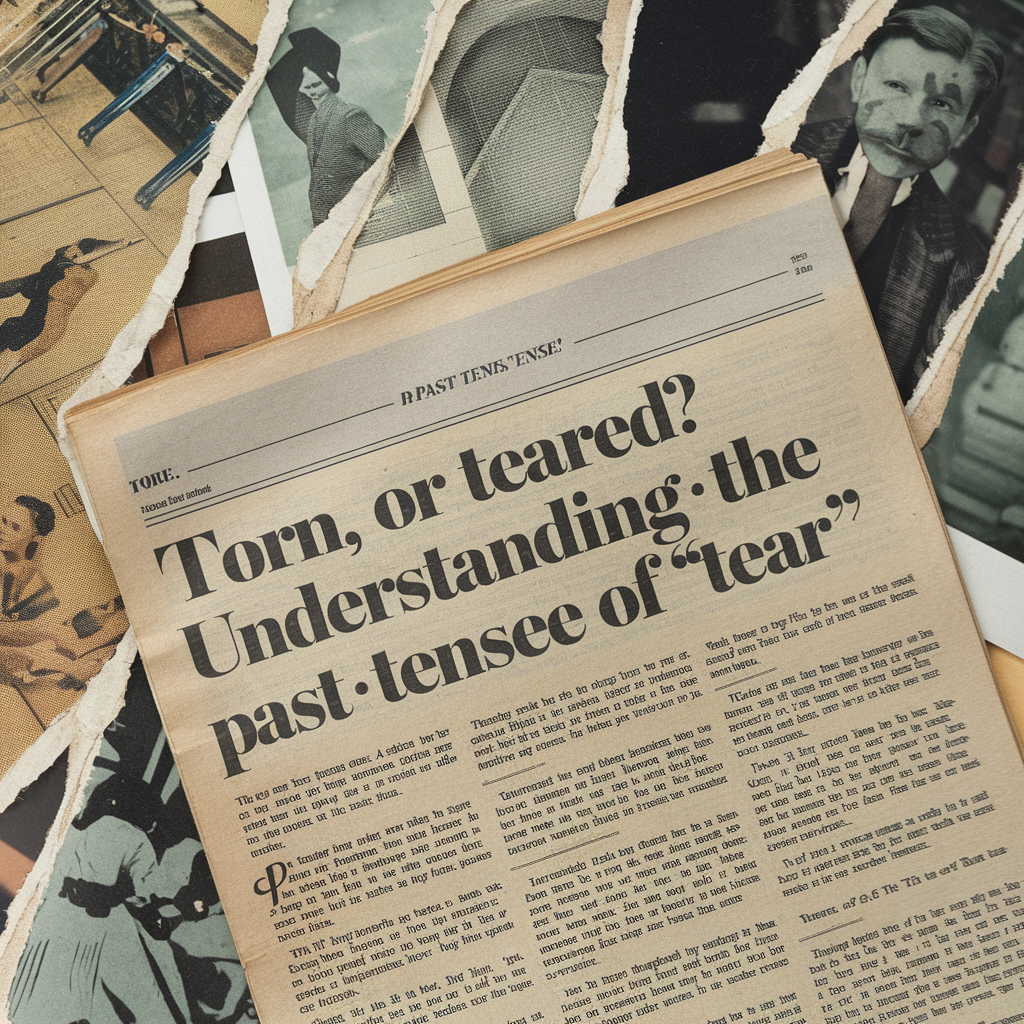Introduction
English grammar can be tricky, especially when dealing with irregular verbs like tear. Many learners struggle with its past tense and past participle forms. Should you say tore, torn or teared? When do you use torn? The correct form depends on the grammatical structure and meaning of the sentence.
In this guide, we will break down the verb tear, discuss its simple past and past participle, clear up confusion, and provide usage examples. By the end, you will have a clear understanding of how to use tear correctly.
Understanding the Verb ‘Tear’
The verb tear has two main meanings in English:
- To rip or damage something by pulling it apart
- Example: He will tear the paper into pieces.
- To shed tears (crying)
- Example: She started to tear up during the speech.
It is important to differentiate between these meanings because they affect the correct form of the verb.
Read More About This Article: Skill Set or Skillset – Which Is Right?
Pronunciation of ‘Tear’
The word tear is pronounced differently based on its meaning:
| Meaning | Pronunciation | Example |
|---|---|---|
| To rip | /tɛr/ (rhymes with “air”) | “I will tear the page.” |
| To cry | /tɪr/ (rhymes with “fear”) | “She will tear up.” |
Simple Past vs. Past Participle
Before diving into the correct form of tore, torn or teared, let’s clarify simple past and past participle:
- Simple past: Used for completed actions in the past.
- Example: Yesterday, he tore the book.
- Past participle: Used with helping verbs (has/have/had) in perfect tenses.
- Example: The letter has been torn in half.
Comparison of Regular vs. Irregular Verbs
Regular verbs simply add -ed in the past tense (e.g., walk → walked), but irregular verbs change completely, which is why tear follows a different pattern.
| Verb | Simple Past | Past Participle |
|---|---|---|
| Walk | Walked | Walked |
| Jump | Jumped | Jumped |
| Tear | Tore | Torn |
The Correct Past Tense of ‘Tear’
Tore (Simple Past)
The simple past of tear is tore. It is used when talking about a completed action in the past.
✅ She tore the envelope open and started reading.
✅ The dog tore the cushion apart.
Torn (Past Participle)
The past participle of tear is torn. It is used in perfect tenses with has, have, or had.
✅ The paper has been torn into small pieces.
✅ By the time I arrived, the curtains had already been torn.
Common Mistakes: ‘Teared’
Many people mistakenly use teared as the past tense of tear, but in most cases, this is incorrect.
❌ He teared the page out of the book. (Incorrect)
✅ He tore the page out of the book. (Correct)
However, teared up is acceptable when referring to crying:
✅ She teared up during the emotional speech.
Common Usage Mistakes and How to Avoid Them
Many English learners mix up tore and torn, or incorrectly use teared. Here are some tips to remember the correct form:
Common Errors
| Incorrect | Correct |
|---|---|
| I teared my shirt. | I tore my shirt. |
| The document was tore. | The document was torn. |
| She had tore the letter. | She had torn the letter. |
How to Remember the Correct Form
- Think of other irregular verbs: Wear → Wore → Worn follows a similar pattern.
- Use ‘has/have/had’ with ‘torn’: If a sentence has “has,” “have,” or “had,” the correct word is torn, not tore.
Synonyms for ‘Tear’
If you want to avoid confusion, you can use synonyms for tear in different contexts.
Synonyms for ‘Tear’ (Rip/Damage Meaning)
- Rip
- Split
- Shred
- Fray
- Rupture
✅ He ripped the paper apart.
✅ The fabric split down the middle.
Synonyms for ‘Tear’ (Crying Meaning)
- Weep
- Sob
- Cry
- Moisten (for “eyes tearing up”)
✅ She started to weep during the ceremony.
Quick Reference Table
For easy reference, here’s a summary of correct forms:
| Verb Form | Example Sentence |
|---|---|
| Tear (Present) | “I tear the paper carefully.” |
| Tore (Past) | “He tore the document by accident.” |
| Torn (Past Participle) | “The painting has been torn.” |
Final Thoughts
Mastering the past tense of tear eliminates confusion and improves grammar usage. Remember:
- Use tore for simple past.
- Use torn as the past participle with “has,” “have,” or “had.”
- Avoid teared, unless referring to crying (teared up).
By practicing these grammar rules, you can confidently use the correct form of tear in writing and speech. Have you ever made a mistake with tore or torn?
